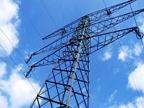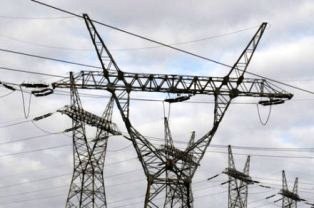Nominal voltages of electrical networks and their areas of application

Nominal voltages of electrical networks and associated sources and receivers of electrical energy are established by GOST.
The scale of nominal voltages for alternating current networks with a frequency of 50 Hz phase voltage should be 12, 24, 36, 42, 127, 220, 380 V; 3, 6, 10, 20, 35, 110, 150, 220, 330, 500, 750, 1150 kV, for networks with direct current -12, 24, 36, 48, 60, 110, 220, 440, 660, 3000 V...
For electrical networks of three-phase alternating current with a voltage of up to 1 kV and connected sources and electricity receivers GOST 721-78 establishes the following values for nominal voltage:
Networks and receivers — 380/220 V; 660/380V
Sources — 400/230 V; 690/400V.
Rated voltage of compensation generators voltage loss in the network fed by them, 5% more than the nominal voltage of this network is taken (see Table 1).
The rated voltages of the primary windings, step-up transformers connected to the generators are also assumed to be 5% higher than the rated voltages of the lines connected to them.
Primary windings step-down transformers have a rated voltage equal to the rated voltage of their supply lines.
Table 1. The nominal and highest operating voltages of electrical networks, generators and transformers with voltages above 1 kV, adopted by GOST 721 — 78, are given.
Table 1.1. Nominal voltage of three-phase current, kV
Networks and receivers Transformers and autotransformers Highest operating voltage without on-load switch ° With RPN primary windings secondary windings primary windings secondary windings 6 6 and 6.3 6.3 and 6.6 6 and 6.3 6.3 and 6.6 7.2 10 10 and 10.5 10.5 and 11 10 and 10.5 10.5 and 11 12.0 20 20 22 20 and 21.0 22.0 24.0 35 35 38.5 35 and 36.5 38.5 40.5 110 — 121 110 and 115 115 and 121 126 220 — 242 220 and 230 230 and 242 252 330 330 347 330 330 363 500 500 525 500 — 525 750 750 787 750 — 787
The power supply of control circuits, signaling and automation of electrical installations, as well as electrified tools and local lighting in production workshops is carried out on direct current with a voltage of 12, 24, 36, 48 and 60 V and on alternating single-phase current 12, 24 and 36 V .at voltages 110; 220 and 440 V. Voltage of DC generators 115; 230 and 460 V.
Electrified vehicles and a number of technological installations (electrolysis, electric furnaces, some types of welding) are powered at voltages other than those listed above.
In step-up transformers, the rated voltage of the primary winding is the same as the rated voltage of three-phase generators. For step-down transformers, the primary winding is the receiver of electricity and its rated voltage is equal to the mains voltage.
The nominal voltages of the secondary windings of the transformers feeding the electrical networks are 5 or 10% higher than the nominal voltage of the network, which makes it possible to compensate for voltage losses in the lines: 230, 400, 690 V and 3.15 (or 3.3); 6.3 (or 6.6); 10.5 (or 11); 21 (or 22); 38.5; 121; 165; 242; 347; 525; 787 kV.
A voltage of 660 V is recommended for supplying electricity consumers. Compared to 380 V, it has a number of advantages: lower energy losses and consumption of conductive material, the possibility of using more powerful electric motors and fewer market TPs. However, to power small motors, electric drive control circuits and electric lighting networks, an additional 380 V transformer must be installed.
The voltage of 3 kV is used only to supply electrical receivers operating at this voltage.
The supply of enterprises, internal energy distribution and the supply of individual electricity consumers are carried out at voltages above 1000 V.
Voltages of 500 and 330 kV are used to supply particularly large enterprises from the power transmission network.At voltages of 220 and 110 kV, large enterprises are supplied by the power system and the energy is distributed at the first stage of supply.
At 35 kV medium-sized enterprises, remote energy users, large energy receivers are supplied and the energy is distributed through the deep entry system.
Voltages of 6 and 10 kV are used to supply low-power enterprises and in distribution networks of internal power supply. A voltage of 10 kV is more appropriate if the power source operates at this voltage, and the number of consumers of 6 kV power is small.
Voltages of 20 and 150 kV are not widely used in industrial enterprises due to their use only in some power systems and the lack of suitable electrical equipment.
The selection of the mains voltage is carried out simultaneously with the selection of the power supply scheme, and in some cases — on the basis of a technical and economic comparison of the options.

